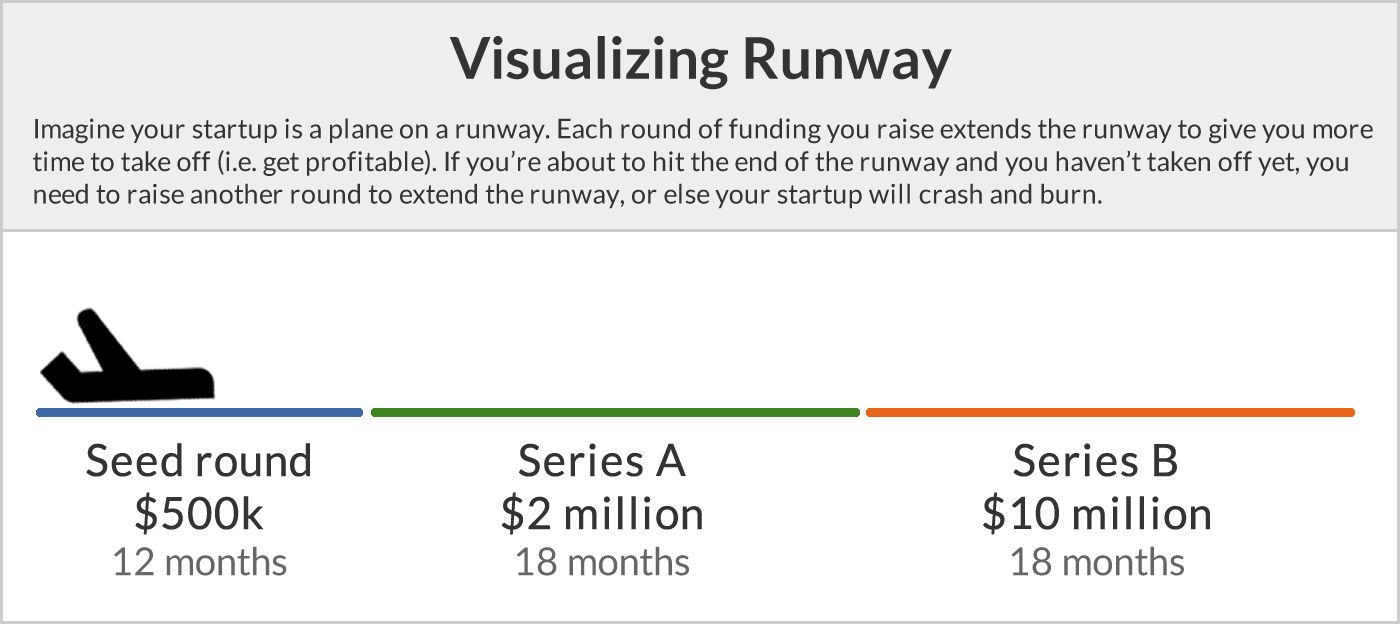Most founders think of their startup runway in terms of time—like an hourglass slowly trickling away sand. They take their money in the bank and divide it by their monthly operating costs, and that’s the number they tell their investors and themselves.
But that number really doesn’t tell you much, and it’s the lazy way to think about it. It doesn’t force you to plan what, exactly, you’ll accomplish, and how, during that time. You could have a year’s worth of “runway,” which sounds like a lot, but if you can’t execute on at least a finite and measurable chunk of your vision during that time and produce some meaningful metrics to show at the next fundraise, that number is pretty meaningless.
It’s better, instead, if you’re still in the “idea” or “product-market fit” stage of your company to think of your runway as a set number of complete experiments you can afford to test before you run out of money. I stress “complete” because a half-finished experiment is even worse than no experiment at all.
Here’s why that’s more productive.
Think of your runway in terms of experiments to run, not time
How many times have you started making something, thinking it was easy. Then only you realize down the line that there was way more to it than you originally thought?
Things are never as easy as you think. And for some things, if you had planned them out carefully before starting, you may have realized that they weren’t worth the effort, to begin with, once you adjust for the cost. With a year’s worth of “runway” in the bank, you probably think you have plenty of time to just “figure things out as you go.”
Thinking like that is the easiest way to bleed cash slowly. And there’s no guarantee you’ll even get to finish what you initially set out to accomplish.
Even the “small” features you want to roll out will always end up more complex than you think once you account for all edge cases or unforeseen circumstances (e.g. people get sick or get fired, random platform updates, etc.). Once you begin planning every detail and accounting/buffering for every edge case upfront, you’ll realize this.
Avoid zombie mode
And once you realize this, you’ll be able to truly determine which experiments you actually have time for, and which sound great on paper but have too many unknowns for them to be confidently completed. Trust me, the worst scenario is running out of money in the middle of a feature or pivot that you think can save your company.
If you’re thinking of runway only in terms of time, it’s also too easy for a struggling company to fall into “zombie mode.” This is where the company is not dead but just grinding away on a feature set. This feature usually far longer than originally planned and has no deadline for completion. The team in “zombie mode” usually has no idea of whether they are moving in the right direction.
During this time, it’s especially helpful to think in terms of experiments (instead of time) because the outcomes of the experiments can act as a clear decision framework for whether the company needs to shut down, pivot, or power through.
The concept of time, on the other hand, is too vague, and I’ve seen founders stretch the definitions of time to keep their companies in zombie mode for far too long.
Explain your start runway in terms of the number of experiments
Thinking of your runway in terms of the number of potential experiments prompts you to operate more efficiently––to approach the task of building a prototype or utilizing your runway purposefully and strategically.
The difference is powerful. Instead of saying, “I think I have 6 months of runway to build my idea,” you say, “I am confident I have enough resources [money + time] to test ideas X, Y, and Z.”
The former tells you nothing.
On the other hand, the latter gives you a more realistic picture of the options and variables at your disposal. It also helps you identify potential bottlenecks before starting development. Also, thinking in terms of ideas forces you to conduct more regular cost/benefit analyses. Lastly it gets you in the habit of defining benchmarks for success for each experiment.
Above all, defining your runway in terms of the number of experiments you can afford to run encourages you to think in terms of how, exactly, you’re going to make money.
And that, when it comes down to it, is really the only thing you should be thinking about as you prepare to embark from the ideation stage.
Alex Paley is a Head of Studio at Glu Mobile, where he runs a studio of about 30 people and concentrates on real-time multiplayer games. Previously, he was the co-founder of Dairy Free Games, which was acquired by Glu in August 2017, and the co-founder of TrackingSocial, a social media analytics company that he and his partner spun into art investing. He’s still involved with investing and has invested in startups that have been acquired.






